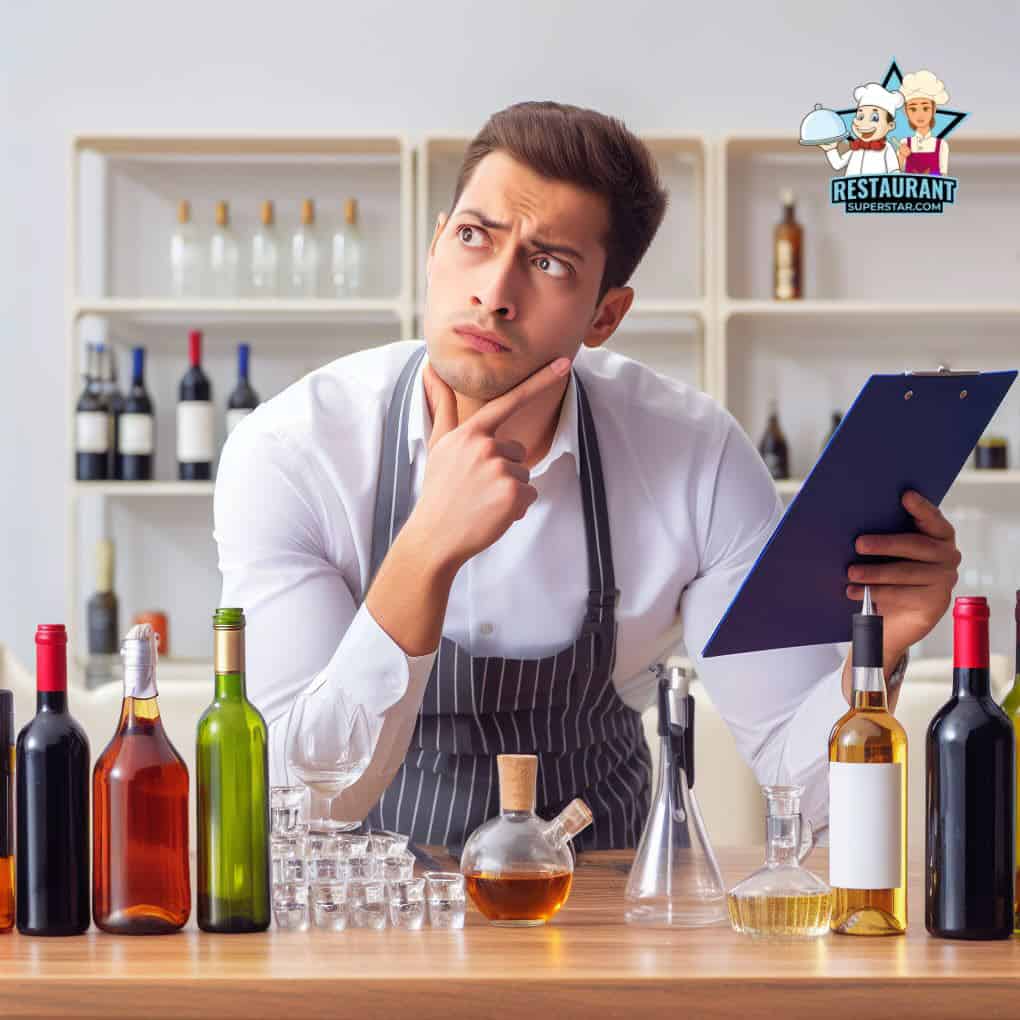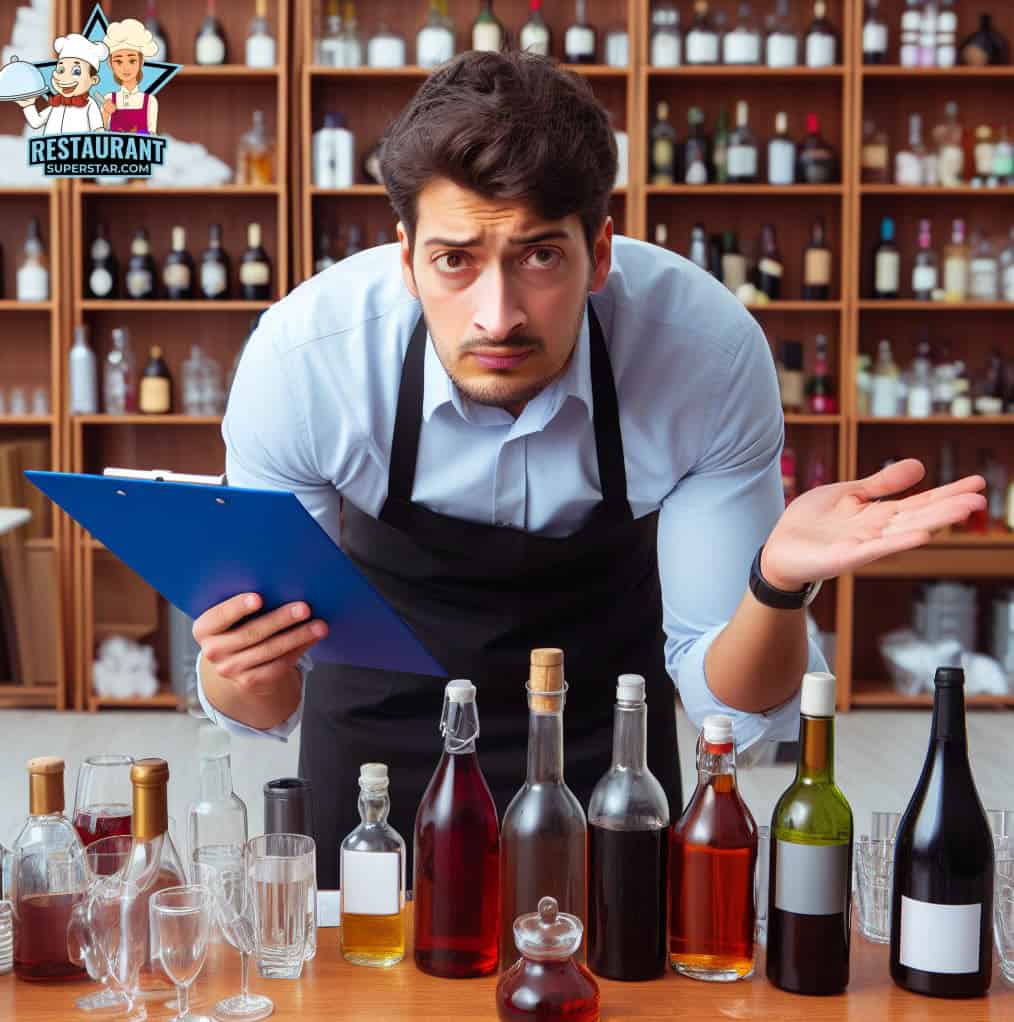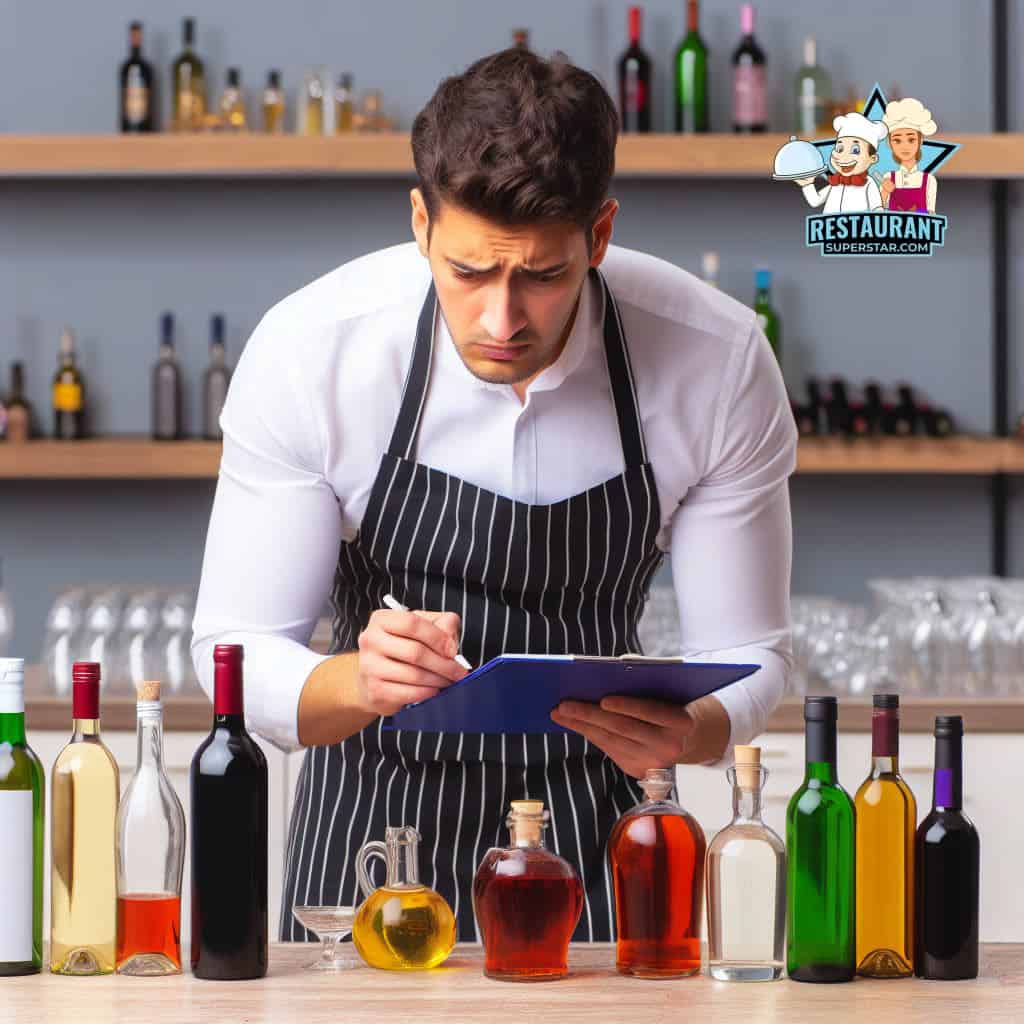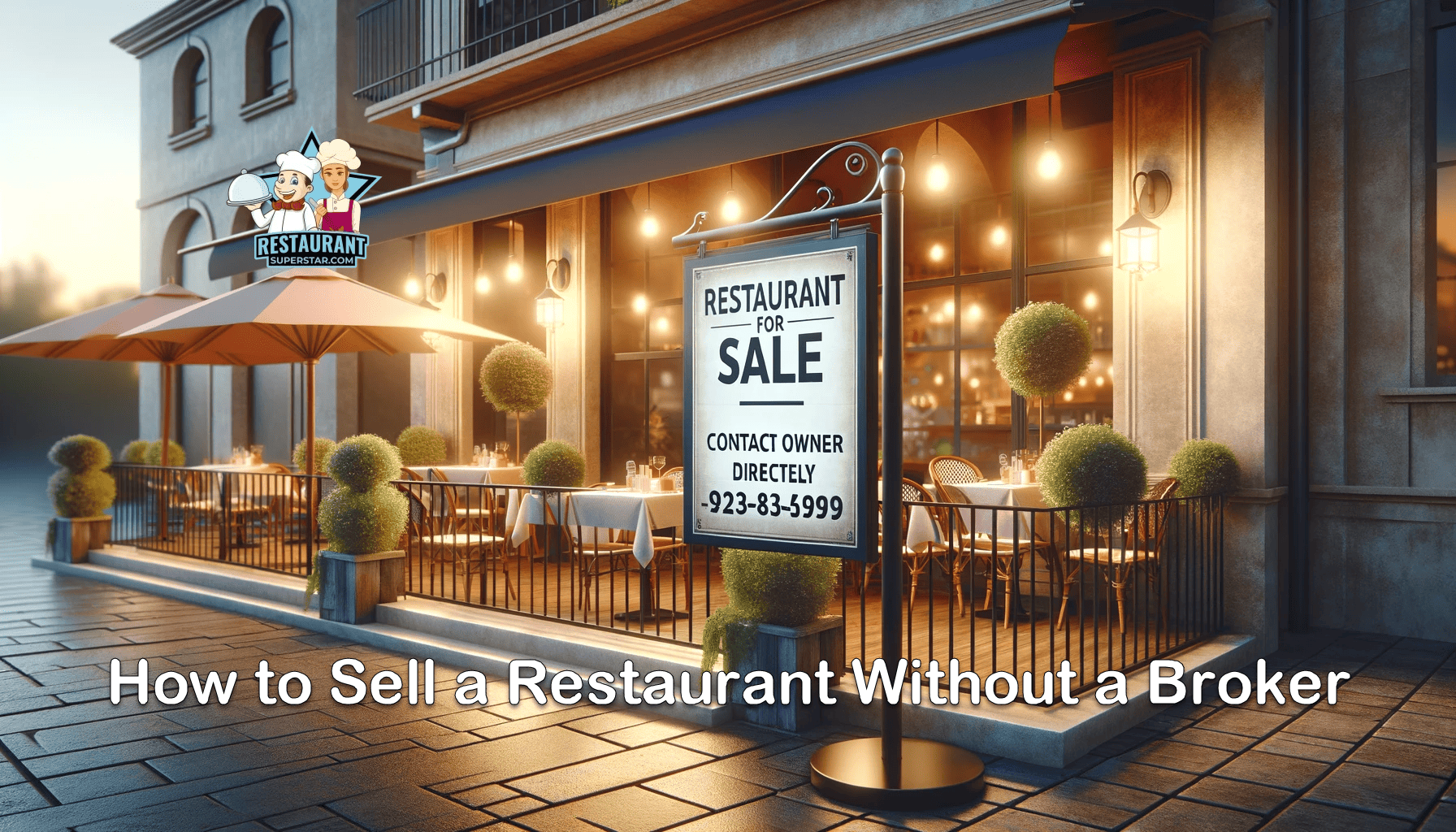What Percentage of Restaurant Sales Should Be Alcohol?
Hey there,
You’re in the right place if you’re scratching your head, wondering, “What percentage of restaurant sales should be alcohol?” I get this question all the time, especially from Florida’s vibrant restaurant scene.
But guess what?
This article doesn’t just stop at answering that burning question. Oh no, we’re diving deep, my friend.
Let’s spill the beans immediately, shall we?
What Percentage of Restaurant Sales Should Be Alcohol?
What percentage of restaurant sales should be alcohol? On average, restaurants churn out 20-25% of their sales from those refreshing (and sometimes intoxicating) beverages. But for venues like bars or nightclubs? That number can soar up to a whopping 50%.
Now, I bet you’re thinking, “Alright, Jeff, I’ve got the magic number, but there’s got to be more to this story, right?” Absolutely! While that percentage might give you a good ballpark, the devil’s in the details.
How does the type of your restaurant play into this? What about your target audience?
And, most importantly, how can you optimize those sales while keeping things on the up and up?
Stick around, and I’ll take you on a deep dive into everything you need to know about what percentage of restaurant sales should be alcohol.
From maximizing your profits to ensuring every customer leaves with a smile (and responsibly so), we’re covering it all.
Understanding Alcohol Sales in the Restaurant Business

Typical Percentage Breakdown
- Average Restaurants: Picture this – you’re at your favorite local diner, and after a delicious meal, you fancy a glass of wine or a chilled beer. You’re not alone! For most standard restaurants around our sunny state, about 20-25% of their sales come from drinks like yours. It’s a sizable chunk.
- Bars and Nightclubs: Now, imagine the vibrant nightlife of Miami or the pulsating beats of a club in Orlando. The drinks are flowing, and the energy is high! It’s no surprise, then, that bars and nightclubs can see up to a whopping 50% (or sometimes even more) of their sales pouring out from those glimmering bottles.
Factors Influencing Alcohol Sales
- Type of Restaurant: The vibe and offering of a restaurant can make a massive difference. Fine dining spots, with their elegant settings and curated menus, might see patrons indulging in pricier wines or champagnes. Conversely, casual eateries, especially those beachside ones we Floridians adore, might pull in a crowd that loves their craft beers and cocktails.
- Geographical Location: Location, location, location! City centers, with their hustle and bustle, often draw a crowd looking for after-work drinks or weekend brunch mimosas. Meanwhile, suburban spots might cater more to families, where a glass of wine or a casual beer with dinner is more the norm.
- Target Market and Clientele: Know your crowd! Younger clientele might lean towards trendy cocktails or local brews. At the same time, an older, sophisticated crowd might appreciate a fine scotch or an aged wine. Tailoring your alcohol menu to your target audience can ramp up those sales.
Understanding the ins and outs of what percentage of restaurant sales should be alcohol can be a puzzle.
Still, with the right pieces, it all falls into place. Remember, it’s about blending the science of numbers with the art of understanding your patrons.
Next, let’s talk benefits and risks (and boy, do I have some stories to share)
Benefits of Selling Alcohol in Restaurants

Let’s talk about the benefits! I often have restaurateurs tell me, “Jeff, I get that there’s good money in alcohol sales, but why should I truly invest time and effort into it?” Well, besides the fact that a perfectly made margarita on a hot Florida day is pure magic, there are some legitimate business advantages to selling alcohol.
Profitability
- High Markup on Alcoholic Beverages: Here’s some inside baseball for ya – the markup on alcohol is often way higher than on food. Have you ever wondered why that glass of Pinot Noir or that Mojito costs what it does? While you’re offering quality drinks to your patrons, you’re also raking in a sweet profit. Those dollars add up and can indeed be the lifeline for many restaurants.
- Potential to Increase Overall Sales Value Per Customer: Think about it. A guest comes in for dinner and pairs their meal with a drink or two (or three, who’s counting?). Before you know it, their total bill’s gone up by a good chunk, increasing your average ticket value. It’s simple math, but oh, so effective.
Customer Experience
- Enhancing the Overall Dining Atmosphere: There is an indescribable charm in the tinkling of glasses and the graceful movements of a bartender crafting a cocktail. It elevates a humble meal and transforms it into a memorable experience, adding an intangible allure to the atmosphere.
- Alcohol as an Attraction and Retention Tool: Let’s be honest; unique or high-quality drink offerings can be a significant draw. Whether it’s that craft beer selection, the sangria Sundays, or the whiskey-tasting nights, these can pull folks in and keep ’em coming back. Remember, a loyal customer is worth their weight in gold (or, in this case, liquid gold!).
Increased Spending
- Likelihood of Additional Food Orders by Customers Consuming Alcohol: Okay, here’s a scenario. After a few drinks, those appetizers and late-night snacks seem way more appealing. Many diners, with a bit of ‘liquid courage,’ are more inclined to splurge on that extra dish or dessert. So, while they’re enjoying a gastronomic adventure, you’re enjoying the additional sales. Win-win.
The benefits of selling alcohol in restaurants are plentiful and, when managed right, can elevate your establishment to new heights. But like every coin, there’s another side. Stay tuned as we delve into the risks and how to navigate them.
Risks Associated with Alcohol Sales
Now, as much as I’d love to keep riding the wave of optimism, it’s time to steer our ship toward some choppier waters.
While the benefits of alcohol sales in restaurants are aplenty, we’ve also got to address the elephant in the room: the risks.
As we say in Florida, “always prepare for the storm,” and that holds in the restaurant business as well. Let’s navigate these waters together.
Responsible Serving
- Over-serving Concerns: We’ve all seen it – that guest who’s perhaps had one too many and is becoming a bit… boisterous. Over-serving isn’t just bad for the ambiance, but it’s a risk to the customer’s well-being and those around them. Plus, it could land your establishment in some hot water legally.
- Staff training to recognize signs of intoxication. It’s crucial, my friends; equipping your team with the know-how to spot (and handle) someone who’s had too much to drink can be a game-changer. It’s about ensuring safety, reducing incidents, and keeping positive vibes. Remember, a well-trained staff is your first line of defense.
Legal Liability
- Potential Lawsuits in Case of Accidents Involving Intoxicated Customers: Now, this is the biggie. If a guest leaves your restaurant after a few drinks and, heaven forbid, causes an accident or gets into trouble, the legal spotlight might turn to you. Liability issues are no joke and can cost your business its reputation and hard-earned money.
- Ensuring Compliance with Local and State Alcohol Regulations: Ah, the joys of paperwork and legalities! But seriously, every city and state has its own set of rules for selling and serving alcohol. Here in Florida, those regulations are clear-cut, but it’s crucial to stay up-to-date and compliant. Regular checks, licenses, permits – it’s a list, but it’s vital to tick every box.
Tips for Optimizing Alcohol Sales

So, we’ve discussed the percentages, the benefits, and the risks. Now, let’s get to the fun part – maximizing those sales while keeping it cool and responsible.
Over the years, I’ve seen what works (and what doesn’t) in the Sunshine State, and I’m here to spill the beans – or, in this case, pour the drinks.
Diverse Beverage Menu
- Offering a Variety of Alcoholic Beverages to Cater to Diverse Preferences: Not everyone’s a beer person and not everyone’s into wine. The beauty lies in variety. Stock up on craft beers, fine wines, zesty cocktails, and some non-alcoholic options. Think Miami mojitos, Tampa tequilas, and those Key West coolers,
Training and Education
- Equipping Staff with Responsible Serving Practices: It’s a recurring theme, and for good reason. Your team should be your ambassadors of responsible fun. Regular workshops or even online courses can work wonders.
- Recognizing Potential Issues Before They Escalate: Empower your staff with the skill of keen observation. Detecting potential issues in their infancy can be the differentiating factor between a mere hiccup and a critical problem.
Promotions and Marketing
- Highlighting Alcohol Specials: Got a new wine or a special cocktail? Shout it from the rooftops (or at least your social media). A well-advertised special can bring in crowds.
- Hosting Themed Nights or Happy Hours: Think about ‘Wine-down Wednesdays’ or ‘Tequila Tuesdays.’ Themed nights can break the monotony and become a weekly attraction.
Creating the Right Ambiance
- Ensuring a Conducive Atmosphere for Customers to Enjoy Their Drinks: The lighting, the music, the seating – it all matters. Whether it’s a chill beach vibe or a classy uptown feel, ensure your ambiance complements your drink menu.
Collaborations
- Partnering with Local Breweries and Wineries for Exclusivity and Promotions: There’s a certain charm to exclusivity. Collaborate with local brewers or winemakers, host tasting events, or introduce limited-time offers. It not only boosts sales but also supports local businesses.
And there you have it – Jeff’s golden nuggets for boosting those alcohol sales responsibly. Every restaurant is unique, and so is its journey with alcohol. But with the right strategies and a dash of Florida flair, you’re set for success.
Conclusion
Alright, my fellow food and drink enthusiasts, let’s wrap this up. We’ve taken quite the journey together – from diving deep into percentages to weighing the pros and cons and even toasting some best practices for upping those alcohol sales.
Here’s the crux: Selling alcohol can be a fantastic profit-booster for your restaurant, especially if you’re embracing diversity in your drink offerings and getting creative with your marketing.
Who doesn’t love a well-crafted drink paired with a delicious meal, especially in our sunny slice of paradise here in Florida?
But – and this is a big ol’ but – with great power (or, in this case, profit) comes great responsibility. Over the years, I’ve seen restaurants flourish thanks to their alcohol sales.
Still, I’ve also seen establishments falter due to mishaps. And trust me, the latter isn’t a road you want to go down.
Remember, it’s all about balance. The balance between offering your customers a fun, enjoyable experience and ensuring that every glass of bubbly or pint of beer is served with a side of safety and responsibility.
It’s about training your team, being aware of your patrons, and always keeping the bigger picture in mind.
So, here’s to finding that sweet spot between maximizing your profits through alcohol sales and serving every drink with care and consideration. As we say down here in the Sunshine State, Cheers to the good times, but always keep an eye on the horizon.
Jeff Smith is a Restaurant Consultant with over 20 years of hospitality experience ranging from server to owner and general manager. He focuses on Restaurant POS technology as well as restaurant marketing. Check out our world-famous restaurant resources page for a comprehensive offering of hand-picked resources and tools to help your business. You can also check out some of our other restaurant business articles.


